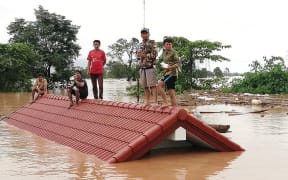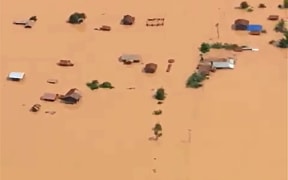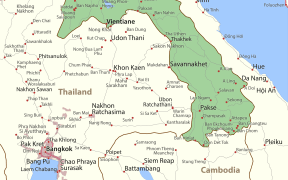Last month - on 23 July - a hydro-electric dam under construction in a remote part of southeast Laos gave way after torrential monsoon rain.
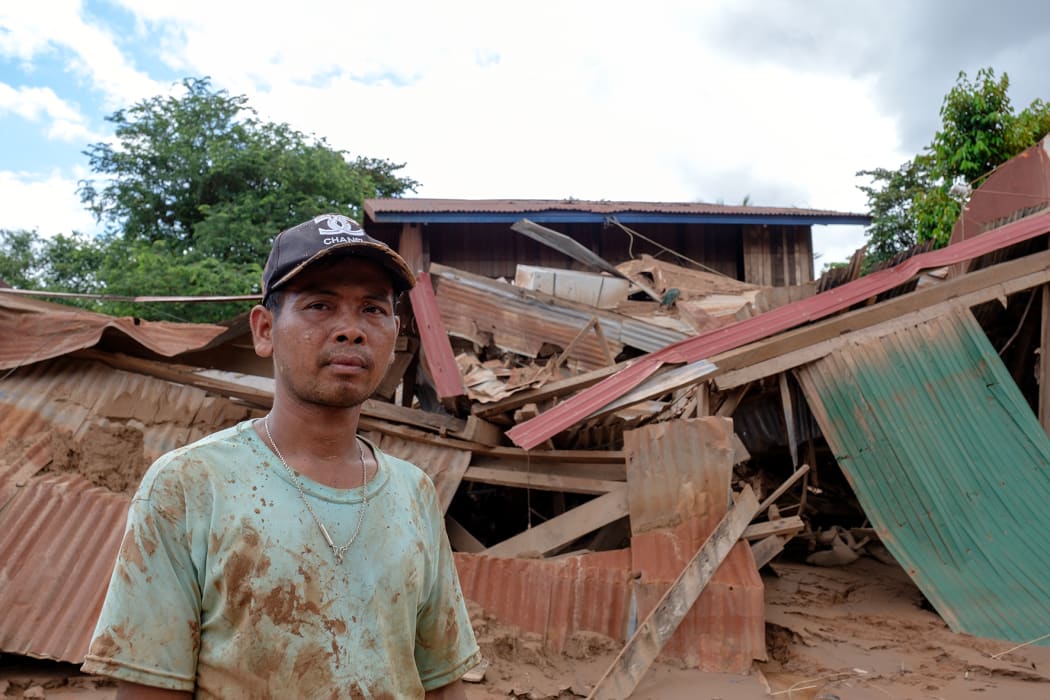
Khambone in front of the remains of his house in Thahin village after floodwaters from a dam collapse swept through. Photo: Supplied / Bart Verweij/IFRC
A wall of water surged into the valley below, swallowing entire villages in Attapeu Province.
At least 39 people were killed - and thousands were rescued - many waiting for days on top of their rooftops.
The secretive government of Laos shut foreign media out and since then little has been known or reported about the aftermath of the disaster.
But aid agency workers have been allowed in to help - New Zealand Red Cross communications manager Ellie van Baaren is one of them and has been in the temporary evacuation camps where 6000 people are living in tents or makeshift shelters.
She said they were now totally reliant on relief supplies for food, water and clothes.
They cannot get back to their homes and most do not even know if they have homes to go back to.
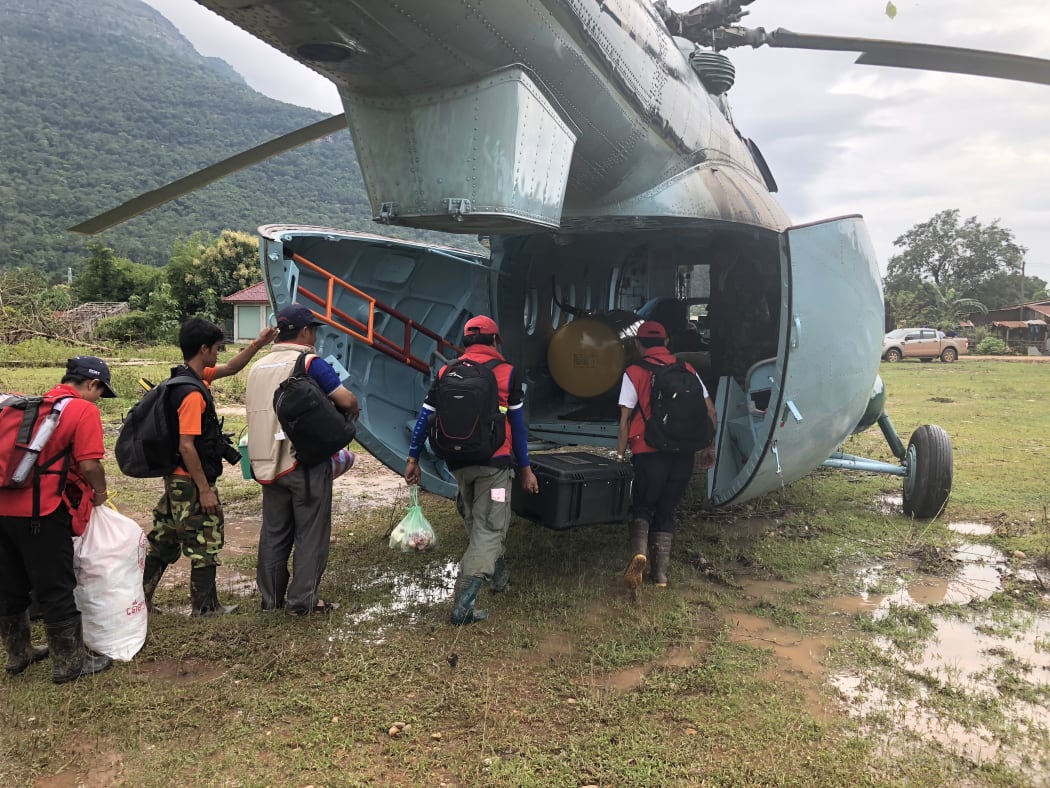
The Red Cross team help load food, water, a generator and water purification units onto a military helicopter bound for Tammayod village, which cannot be accessed by road. More than 700 people are staying in the village with access to only one working toilet. Photo: Supplied / Ellie van Baaren/IFRC
For those whose homes are still standing, Ellie van Baaren said the biggest problem was the mud.
"There's mud ranging from knee-height to waist-height so they don't know what they can save or if they can save anything.
"Either their houses been destroyed or the ones that are left are just so thick in mud that they can't get back to them, which is one of the reasons so many people are still living in tents and will be for some time to come."
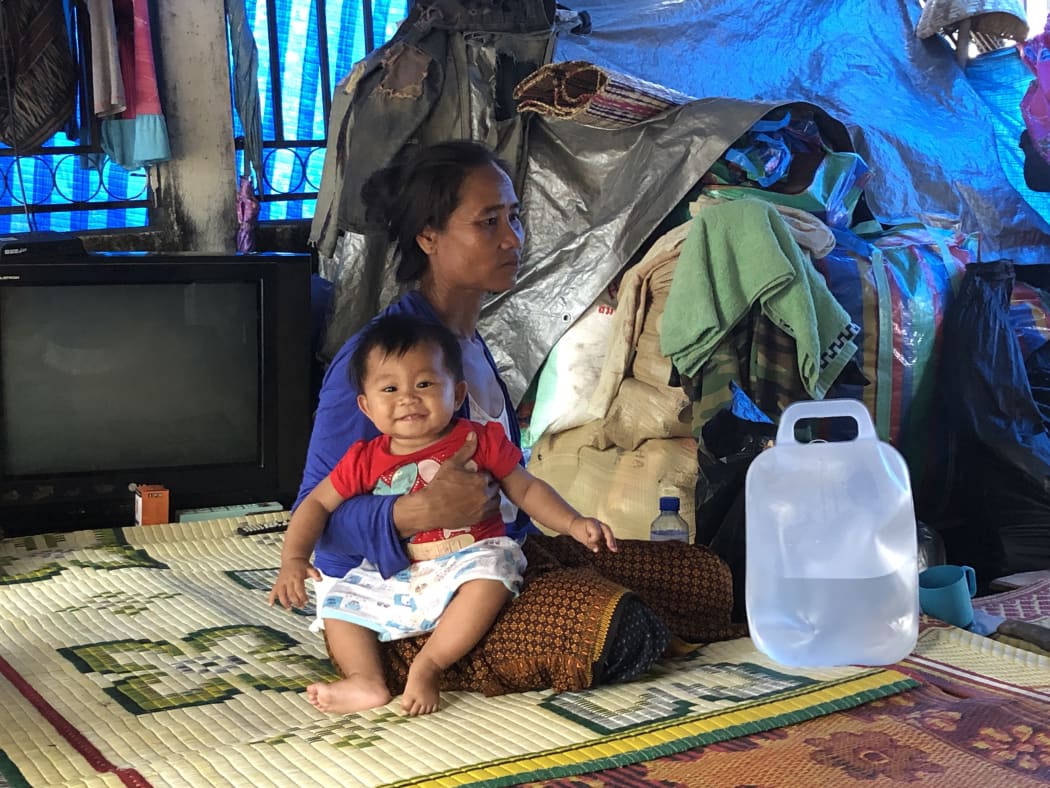
This 7-month-old is staying in a makeshift shelter at one of the evacuation centres in Sanamxay district with her parents, two big sisters and five other members of her extended family. They are relying on relief organisations for food, clean water, clothing and sanitation supplies. Photo: Supplied / Ellie van Baaren/IFRC
Government and aid agencies are focussing on trying to build more permanent shelters for the evacuees but Ms van Baaren said, according to some estimates, they could be in temporary shelters for two to four years.
The thick mud is also hampering efforts to find the 100 or so people still missing in the disaster.
Ms van Baaren said people were very concerned about their future livelihoods and food security.
"Not only have they lost their rice paddies but a lot of them have lost massive stores of rice which would have fed their families for month. One woman I spoke to says they lost two tonnes of rice which would have fed them until December."
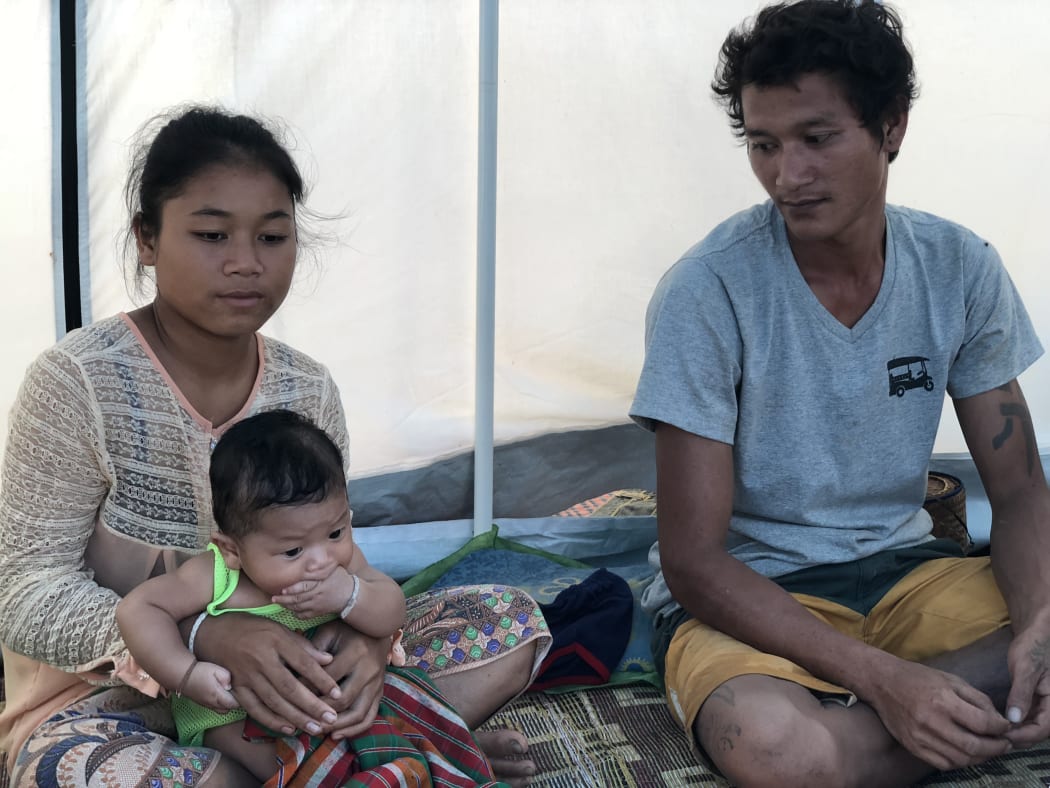
Lao, Pao and their 3-month-old daughter Sa are staying with two younger siblings in a tent in Tammayod village, which is only accessible by helicopter. They were warned by friends about the floodwaters and fled, their parents left it too late and didn't make it. Photo: Supplied / Ellie van Baaren/IFRC
Authorities in Laos gave Cambodia no warning of the dam failure, and the flood crossed the border and resulted in the emergency evacuation of some 1200 families from a town in the northern Cambodian province of Stung Treng.
Laos is one of the poorest countries in Asia, and while it has transitioned from communism to a market economy, it remains a single-party state.
The Xe-Pian Xe-Nammoy hydro dam was being constructed by a joint venture led by South Korean companies with Thai and Lao partners.
It was due to be completed next year, and is one of some 140 dam projects slated for construction in Laos, of which two-thirds are already built or under construction.
Electricity from several hydroelectric dams provides a large share of Laos' export earnings, with Thailand being a major buyer.
Laos has an ambitious dream of becoming the battery of Asia but questions are now being asked at what cost?
After spending time with weary evacuees, Ellie van Baaren said people seem more shellshocked by what's happened, rather than angry.
There's rain everyday, there's mud everywhere and they're just really tired, she said.

